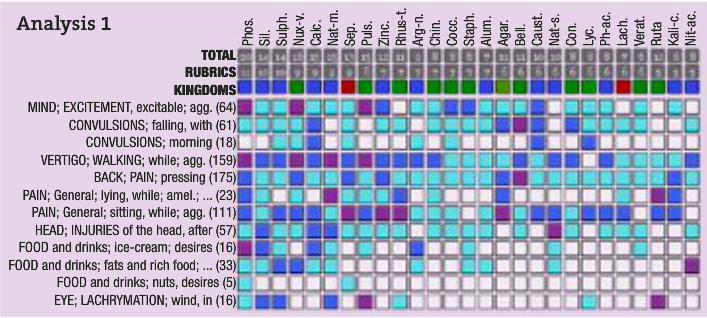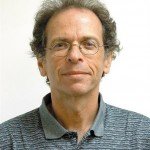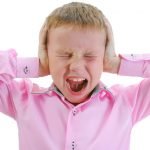Joseph Kellerstein, DC, ND
Lacey is in her forties. She is tall and slender. It does not quite seem right that she is walking into my consult room using a cane, with a timidity that is verified by an uncertain smile.
There is a pleasant mildness and grace about her and a creamy smoothness in her speech. As she begins to talk, a warm smile beams out:
It was 94/95. It was a new time in my life. I was very excited. It was the time my husband proposed. After the proposal, I got lots of headaches. I could just blank out and fall to the ground. Each time I fell, I would hit my head in exactly the same spot on the occiput. They found a growth of inflamed tissue on my right temporal lobe. Ultimately, they discovered that the seizures came from the left side of the brain, and after the third craniotomy, they removed some scar tissue and the frequency/intensity of the episodes very much decreased. I still do get the seizures. They seem to be triggered by the smell of frying food or by loud noises. I am on a medicine that helps a lot. Last year, I had a bad seizure. I fell backward and hit the back of my head and the lumbar region of my back. Since then, my balance has been off as well. I’ve been very nervous of everything. I cannot cross the street alone. I feel always that people are watching. I notice that excitement seems to bring on the seizures. Attention [referring to public speaking] seems confining. There is an aura. First, there is a funny taste in my mouth, then nausea in my stomach and dryness of the mouth. I will go unconscious for about 5 minutes. On waking, there is confusion. This can happen about 5 times per month but only once with unconsciousness since the medication. They happen more in the morning. Mornings can get stressful, and crowds are worse. The loss of balance–vertigo is more difficult when walking because I have to look to see where I am going. When I look, the vertigo is worse. In my back, it is as if a fist is in there pressing. It is a bit better from lying on the back. I try to move it around to release it. It is worse from sitting too long and worse rushing. Ever since the fall, it is hard to fully release urine. There are frequent urgings, but not a lot comes out. There is a constant feeling as if there is a lot there, but nothing comes out. This is just something else I have no control over. I am a real burden. Sometimes, I just feel like walking away. I always looked after my sister. I was “in charge” and reliable. When I did any acting or singing, people said I did a great job. I did not depend on anyone. Not being able to work is a big thing. I worked in a nursing home. I was helpful and in control. In sleep, I get lots of visions. It’s as if someone communicates with me, telling me what to do, and cautioning me. I also get dreams telling me to do what I want. Appetite is highest in the morning. Desires are ice cream, brownies, mayo, and nuts. I am a people person. I love art and culture. I love finding new things to learn. My volunteer work is important. It’s like a little family. I love nature.
Lacey further mentions that the slightest breeze will cause her eyes to water. I add this to the repertory chart.
Phosphorus is a hit on our repertory chart, but we need to be careful. Does it really look like Phosphorus? There is no craving for ice-cold water (thirst was not so remarkable). There is no hypersympathetic aspect, no extreme sensitivity to barometric pressure, and no burning pains.
The origins of the problem come from a time of great excitement; that does sound like Phosphorus. The back pains seem to fit Phosphorus nicely. The warm engaging presentation of this lady, combined with her timid nervousness, recommends Phosphorus.
I prescribed Phosphorus 12C once every third day. We did not have a 6C in stock, and she struck me as frail and sensitive. OK, I am perhaps overcautious here, but she just gave me that sense.
Visit 2
At visit 2, approximately 3 weeks later, the patient reports being less depressed and more playful with the kids. Her balance seems a bit better.
Lacey estimates that her back seems 80% better! She reports that her sleep is also improved.
She can eat fruits now. They had previously been causing diarrhea.
It is too soon to assess her seizures. The plan is to continue Phosphorus 12C.
Visit 3
During the next interval between visits, Lacey has had 2 seizures. She also reports: “I have joined a gym. I always wanted to. I am less nervous and less concerned with what people think. I walk with a lot more confidence.” The plan is to continue Phosphorus 12C every third day.
Visit 4
At visit 4, Lacey describes the improvement in her symptoms:
All that I wanted is falling into place, medically, mentally, and physically. Frequent urination is better, and emptying is improved. I’ve been going to the gym. I work out, and there is less pain all over. The seizures seem to be once to twice monthly now. I am not falling. I sense the taste in my mouth and sit down. I breathe slowly. It lasts a few minutes. I need some water before a seizure. I can stay up later, and my energy is improved (mental state much improved). Family seems less cautious of me.
The plan is to continue Phosphorus 12C as before. I instruct her to take a dose immediately on sensing the coming of an episode. (This follow-up visit was nicely conducted by Monica Frohmann, while I was off frolicking.)
Visit 5
At visit 5, Lacey gives the following report:
Everything is going right medically. My balance is much better the last 2 weeks, and maybe I don’t need a cane. Going to the gym, and it feels great. I am much more social, meeting new people. I did have a seizure yesterday. I felt it coming and calmed myself. It was the first in a long time and shorter in duration. Basically, I feel overall 80% improved.
Certainly, the case is not fully cured, but even this far we can see a dramatic shift. I like homeopathy.

 Joseph Kellerstein, DC, ND graduated as a chiropractor in 1980 and as an ND in 1984. He graduated with a spe-cialty in homeopathy from the Canadian Academy for Homeopathy, and sub-sequently lectured there for two years. He also lectured in homeopathy for several years at CCNM; for eight years at the Toronto School of Homeopathic Medicine; and for two years at the British Institute for Homeopathy. Dr Kellerstein’s mission is the exploration of natural medicine in a holistic context, especially homeopathy and facilitating the experience of healing in clients.
Joseph Kellerstein, DC, ND graduated as a chiropractor in 1980 and as an ND in 1984. He graduated with a spe-cialty in homeopathy from the Canadian Academy for Homeopathy, and sub-sequently lectured there for two years. He also lectured in homeopathy for several years at CCNM; for eight years at the Toronto School of Homeopathic Medicine; and for two years at the British Institute for Homeopathy. Dr Kellerstein’s mission is the exploration of natural medicine in a holistic context, especially homeopathy and facilitating the experience of healing in clients.





